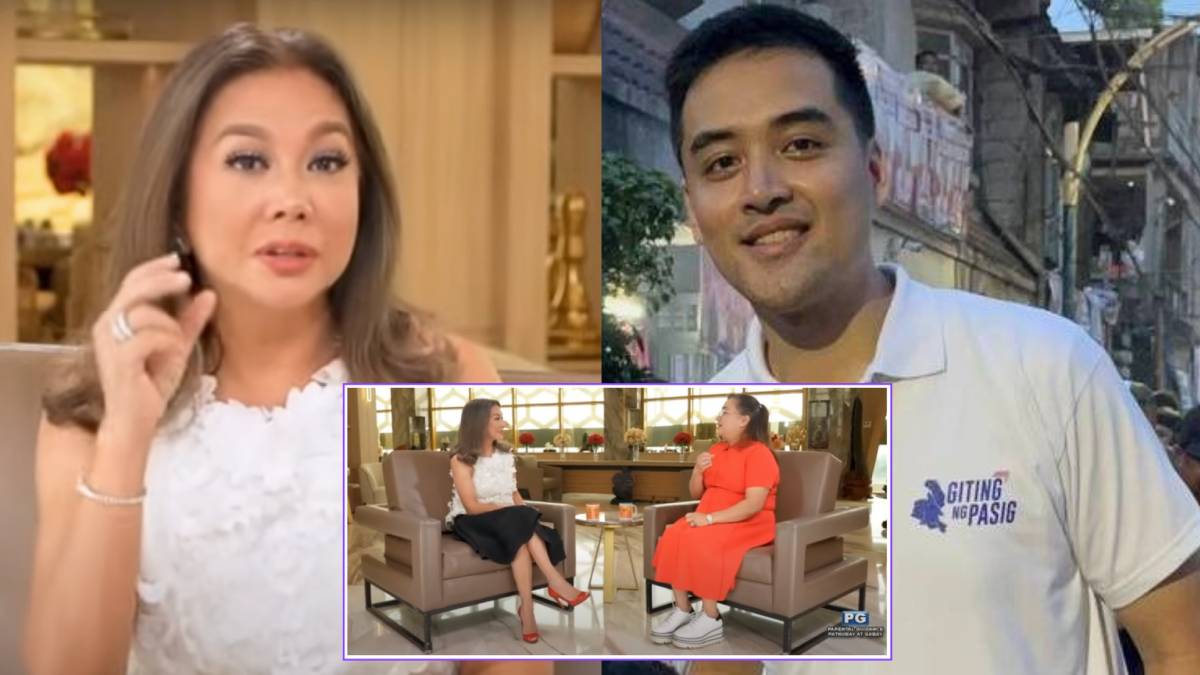In a surprising and highly controversial move, an interview conducted by veteran journalist Korina Sanchez featuring the Discaya family was recently pulled from all public platforms. The sudden disappearance of this once-accessible segment has ignited a fierce debate, stirring up questions about the integrity of media practices and the increasing scrutiny faced by public figures in today’s climate.

How the Controversy Began
The controversy erupted when a high-profile figure publicly suggested that the interview might have been a paid placement, alleging that millions were exchanged to secure the feature. These claims, although never substantiated with clear evidence, quickly spread through social media and mainstream news, casting a shadow of doubt over the intentions behind the interview.
This allegation struck a chord because it touched upon a sensitive issue that many in the media industry have quietly grappled with—where exactly is the line between editorial content and paid advertising? The blurred boundary between genuine storytelling and sponsored content has become a hot topic globally, and this incident has shone a bright spotlight on it locally.
The Interview’s Sudden Removal
Within hours of the allegations surfacing, the interview was removed from all digital platforms, leaving viewers and followers puzzled and eager for answers. Was this an act of damage control by the network, or a response to mounting public pressure? The lack of an official explanation only fueled rumors and speculation.
Many saw the removal as suspicious, prompting questions about transparency and accountability. Some accused the network of trying to hide evidence, while others believed it was a protective measure to shield the individuals involved from unwarranted attacks.
Official Statements and Denials
The producers and Korina Sanchez herself quickly issued statements denying any wrongdoing. They firmly stated that the interview was neither bought nor sponsored, but rather a sincere feature aimed at sharing a compelling human-interest story. They emphasized that the content adhered strictly to journalistic standards and ethics, highlighting the importance of separating unfounded rumors from facts.
Interestingly, in a previous iteration of their official communication, there was a frank acknowledgment that some programming may occasionally include paid content, handled transparently and clearly disclosed to audiences. However, that admission was later removed from public statements, underscoring the delicate nature of this particular case.
Other Journalists Join the Conversation
Adding further clarity, a well-known broadcaster who also interviewed the Discaya family confirmed that his segment was focused solely on lifestyle and personal stories, devoid of any political undertones or campaign motives. According to him, the Discayas were not politically active at the time of the interviews, supporting the argument that these features were meant to showcase their personal journeys rather than promote any political agenda.
This perspective has brought some balance to the heated debate, but the damage to public perception appears to linger.
The Larger Issue: Media Ethics in Question
Beyond the specifics of this case, the situation highlights a broader, critical challenge facing modern journalism: maintaining the fine line between editorial integrity and commercial interests. As media companies navigate financial pressures and competition for viewers, the temptation to blur this line increases. The public’s trust hinges on transparency—viewers want to know when they’re watching genuine news or paid content disguised as it.
The sudden removal of the interview only deepens concerns about transparency. In an era where “fake news” and misinformation are rampant, any hint of secret deals or hidden agendas can erode trust not only in one program but in the entire media ecosystem.

What This Means for Public Figures and Audiences
For public figures, especially those with political ambitions or active careers, this incident serves as a cautionary tale. Even a personal, human-interest feature can become a lightning rod for controversy if questions arise about its origin or intent. The blending of personal stories with political image-building is a delicate dance, easily misinterpreted by the public and critics alike.
Audiences, on the other hand, are reminded to approach media content with a critical eye. The need for media literacy has never been greater as viewers learn to question not just the message but also the motivations behind what they consume.
Looking Ahead: The Road to Restoring Trust
The media industry must take this controversy as a wake-up call. Clearer guidelines and disclosures about paid content, more rigorous editorial oversight, and open communication with viewers are essential steps toward rebuilding trust. Journalists and producers must recommit to transparency, ensuring that stories reflect genuine news and human experiences without hidden financial influence.
At the same time, public discourse needs to mature. Accusations without evidence can cause irreparable harm to reputations and careers. Responsible dialogue is necessary to foster a media environment where truth and trust coexist.
Final Reflections
The disappearance of the Discaya interview and the swirling allegations around it reveal the fragile state of media credibility today. It’s a reminder that behind every story shared with the public lies a complex web of decisions, responsibilities, and ethical considerations. As audiences, we must demand transparency and hold media accountable while also remaining cautious about accepting rumors at face value.
In a world where information flows faster than ever, the responsibility to preserve truth and integrity rests with both content creators and consumers alike. Only through mutual respect and honesty can the media regain the trust it urgently needs.